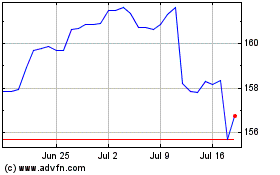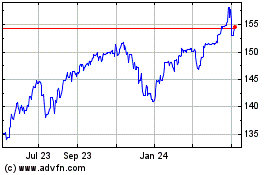Dollar Index Edges Up Amidst Softer PCE Data
July 01 2024 - 6:09AM
RTTF2
The Dollar Index recorded minor gains during the week ended June
28 in the backdrop of a softening in PCE-based inflation readings.
Persisting weakness in the Japanese yen also boosted the 6-currency
index. In the past week, the U.S. dollar weakened against the euro,
but the Australian dollar as well as the Canadian dollar held their
ground against the British pound, the Japanese yen, the Swedish
krona and the Swiss franc.
From the level of 105.80 on June 21, the Dollar Index edged up
0.07 percent in a week's time. The Index which had touched a weekly
low of 105.37 on Tuesday climbed to the weekly high of 106.13 on
Wednesday. The Index eventually slipped and closed the week at
105.87.
Data released by the U.S. Bureau of Economic Analysis on Friday
showed year-on-year PCE Price Index declining as expected to 2.6
percent in May versus 2.7 percent in the previous month. The core
component also, as expected, decreased to 2.6 percent from 2.8
percent in the previous month. Likewise, the month-on-month PCE
Price Index was flat as expected, edging down from 0.3 percent in
the previous month. The core component also matched expectations as
it declined to 0.1 percent from 0.3 percent in the previous
month.
Despite the softening in the PCE update, the Dollar remained
firm at levels reached in the previous week in the backdrop of
stronger-than-expected PMI readings.
Amidst the political uncertainty in Europe, the EUR/USD pair
rallied 0.21 percent during the week ended June 28. The pair
slipped from the high of 1.0747 recorded on Monday to a low of
1.0666 on Wednesday. The pair eventually closed at 1.0713, versus
1.0691 a week earlier. Data released during the week had shown
weaker-than-expected readings of business climate as well as
consumer confidence from Germany and a softening in consumer price
inflation in France.
The GBP/USD pair however edged down during the week ended June
28, as dovish rate cut hints resulted in a bearish outlook on the
pound. The GBP/USD pair which had closed at 1.2645 on June 21
slipped 0.02 percent during the week ended June 28 to close at
1.2642. The weekly trading range was wider, between a high of
1.2704 recorded on Tuesday and a low of 1.2612 recorded on
Thursday.
Amidst a rebound in consumer confidence, the Australian dollar
jumped 0.42 percent against the U.S. dollar during the week ended
June 28. From the level of 0.6639 recorded on June 21, the pair
rose to close at 0.6667. During the week, the pair oscillated
between a high of 0.6690 recorded on Wednesday and a low of 0.6619
recorded on Friday.
The U.S. dollar however rallied against the Japanese yen during
the week ended June 28, despite growing speculation of a regulatory
intervention. Though the past week commenced with the release of
the Summary of Opinions by Bank of Japan that contained hints of a
possible rate hike in July, market perception of a dovish BoJ kept
sentiment for the yen subdued. The USD/JPY pair closed the week at
160.83 versus 159.79 a week earlier, recording an addition of 0.65
percent. The pair ranged between the low of 158.82 recorded on
Monday and the high of 161.28 recorded on Friday. Also swaying
sentiment in favor of the greenback was the prospect of a trade war
between China and the West.
The ISM Manufacturing PMI from the U.S released this morning
revealed an unexpected decline. Fed chair Jerome Powell's speech
and the JOLTS report from labor market are due on Tuesday. The
release of the minutes of the recent FOMC as well as the Services
PMI are due on Wednesday. The Dollar Index is in this backdrop
hovering near 105.64.
The EUR/USD pair has increased to 1.0758 as the French election
results revealed a less-than-expected likelihood of expansionary
fiscal policies. Meanwhile, Germany's CPI declined to 2.2 percent,
a level lower than expected.
Ahead of U.K.'s general election on July 4, the GBP/USD pair is
hovering near 1.2692. Ahead of the release of the minutes of the
meeting of the Reserve Bank of Australia, the AUD/USD pair is at
0.6679.
The USD/JPY has touched a 38-year high of 161.46 amidst a
downward revision in Japan's PMI readings for June. The pair is
currently at 161.30, even as speculation grows about a foreign
exchange intervention by the Japanese Ministry of Finance.
US Dollar vs Yen (FX:USDJPY)
Forex Chart
From Jun 2024 to Jul 2024

US Dollar vs Yen (FX:USDJPY)
Forex Chart
From Jul 2023 to Jul 2024
